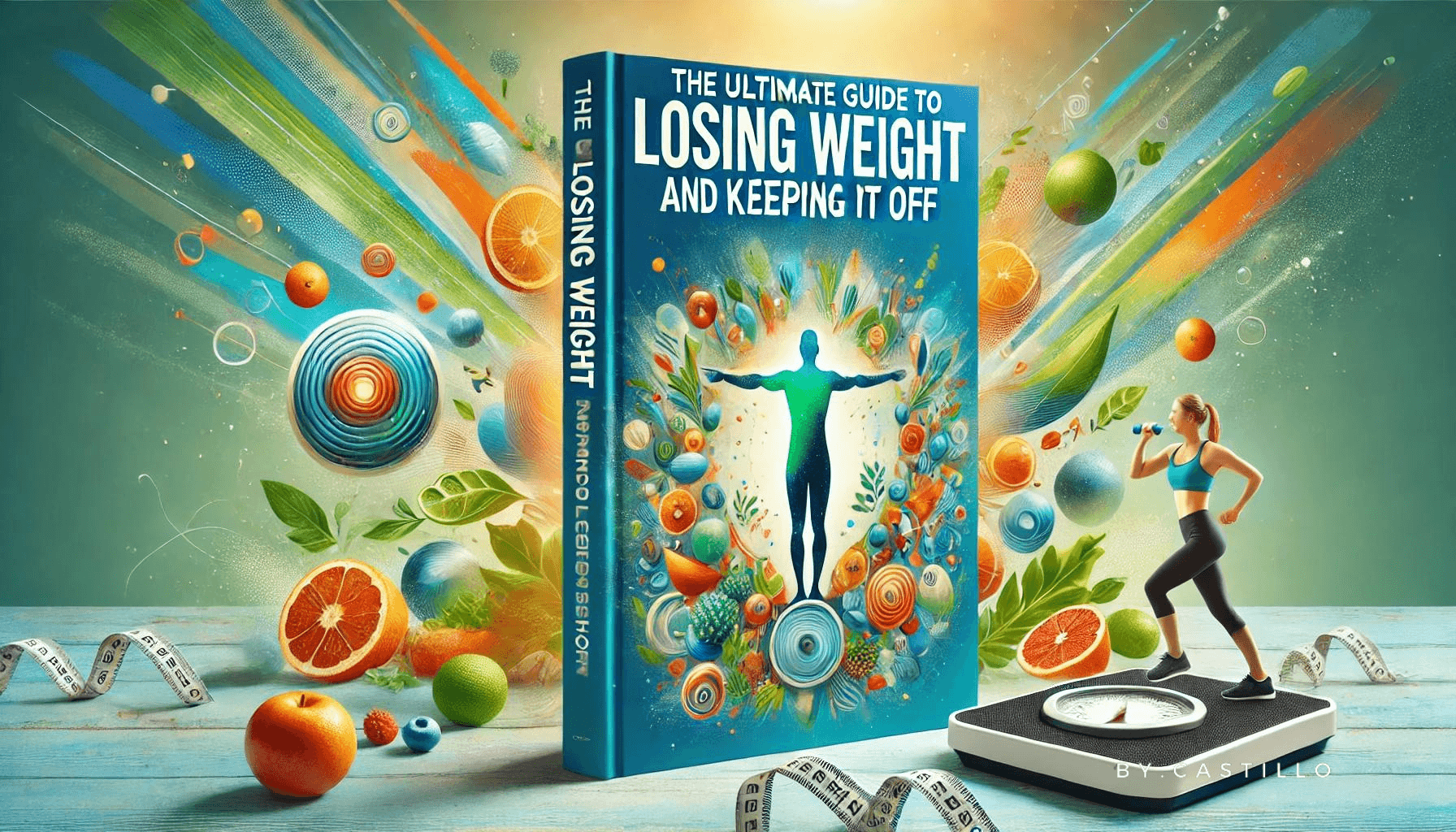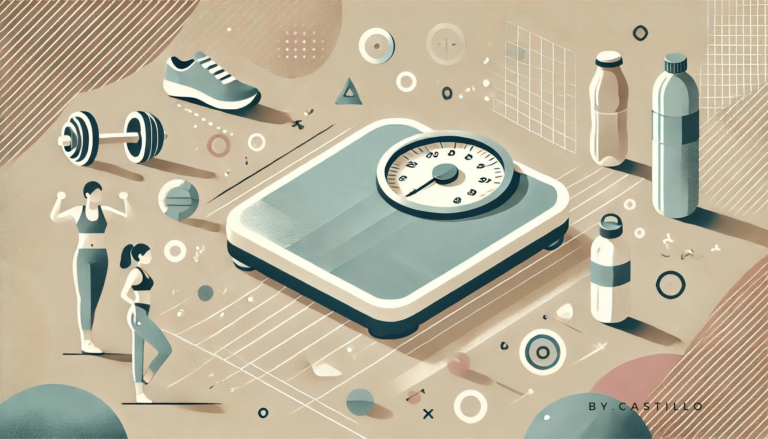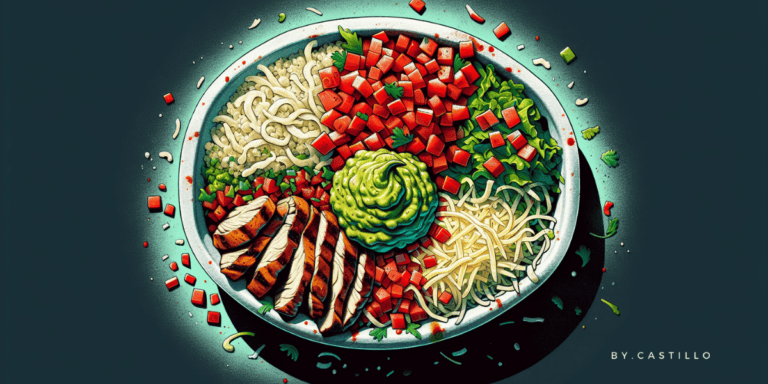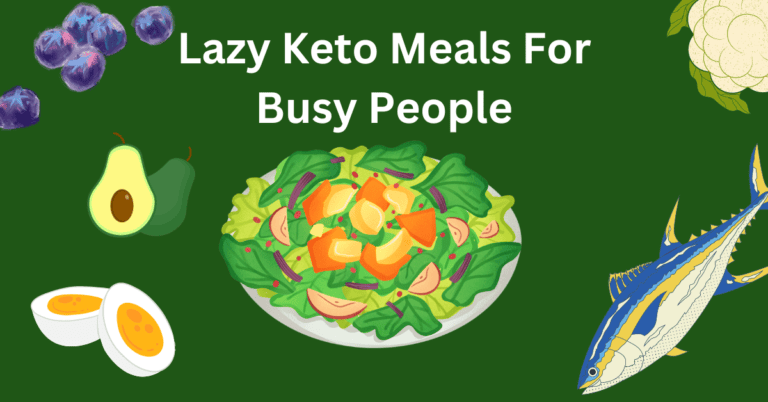The Ultimate Weight Loss Guide to Losing Weight and Keeping It Off
Did you know that 95% of people fail to achieve their weight loss goals? Pretty crazy right? Make yourself the exception and let’s break this cycle. Sustainable weight loss is crucial for your overall health and well-being. This weight loss guide will walk you through setting realistic goals, crafting a balanced diet, understanding calories, incorporating exercise, developing a healthy mindset, overcoming challenges, and maintaining progress. Following these evidence-based strategies, you’ll be well-equipped to achieve your healthy weight loss goals and transform your life.
Key Takeaways:
- Set realistic, measurable weight loss goals and break them down into smaller milestones
- Identify your body composition type to approach a weight loss diet plan better
- Create a balanced diet plan rich in whole foods, fruits, vegetables, lean proteins, and healthy fats
- Understand calories and track your intake to create a moderate deficit for weight loss
- Incorporate both cardio and strength training into your routine, finding activities you enjoy
- Develop a positive mindset, practice self-compassion, and build a support network
- Navigate challenges by staying flexible, planning ahead, and learning from setbacks
- Adopt a lifelong commitment to healthy habits to maintain your weight loss
Setting Realistic Weight Loss Goals

The first thing you want to focus on is setting achievable goals. To do this you want to consider factors that are unique to you, such as your age, height, body composition, and physical abilities.
To maintain motivation, track your progress and break down your long-term weight loss goals into small actionable steps and milestones. For example, aim to lose 1-2 pounds per week by creating a calorie deficit through a combination of diet and exercise.
Celebrate each milestone along the way and keep this in mind – sustainable weight loss is about creating lasting habits, not quick fixes!
Here are some strategies to set measurable goals and stay motivated:
- Aim to lose 1-2 pounds a week
- Celebrate non-scale victories like better-fitting clothes and higher energy levels
- Use the SMART method to create a weight loss plan: Set Specific, Measurable, Achievable, Relevant, and Time-bond goals
- Every 3 months reassess and adjust your weight loss goals based on your progress
- Celebrate small wins
Now that you have an idea of how to set realistic goals, it’s time to write them down and create a plan to achieve your weight loss goals. Make sure to include actionable steps you can take every day.
Review your goals and weight loss plan each day and take action!
At first, it can be challenging but starting slow is key to consistency. As you continue to progress, incorporate new challenges and strategies to push yourself to new levels!
Understanding Your Body Composition
Body composition or body type, is often overlooked by many when starting their weight loss venture. It’s important to know what your body composition is because it will help you determine how to approach your diet and weight loss journey.
As we all know, there is no one-size-fits-all approach when it comes to weight loss and dieting. But, approaching a diet and weight loss based on your body composition will work wonders!
Let’s get into it.
The three main Body composition types most people fall into:
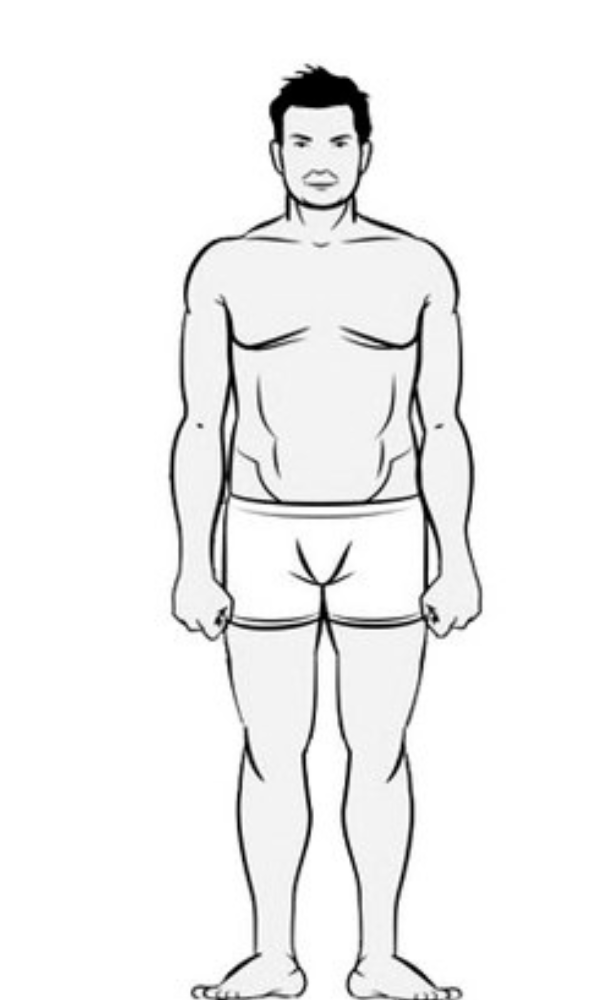
Endomorph
These individuals typically have a higher amount of body fat and a lower amount of muscle mass. They may gain weight more easily than others.
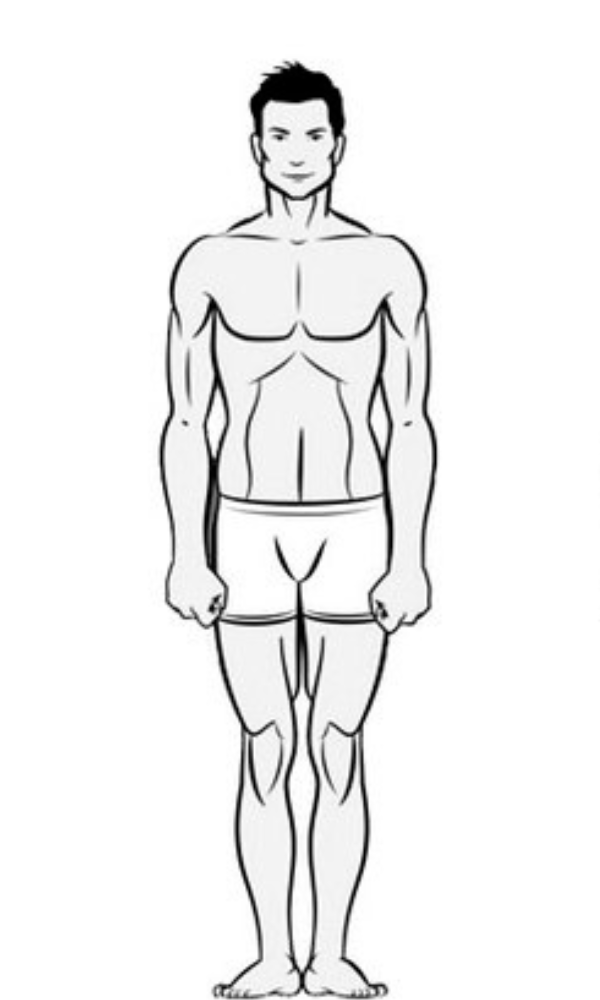
Mesomorph
Mesomorphs often have a medium amount of body fat and muscle mass. They may gain muscle more easily than others.
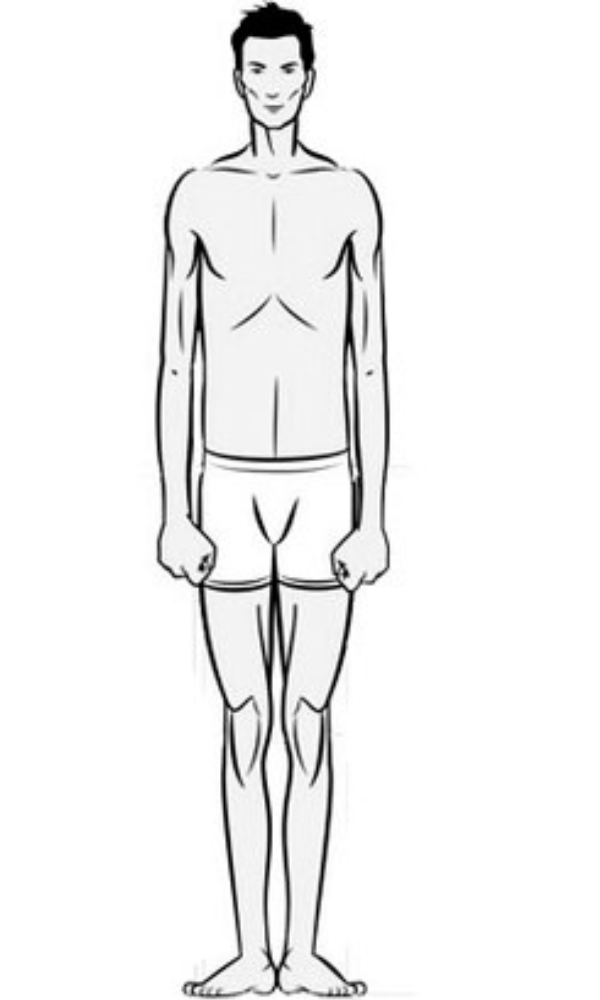
Ectomorph
Ectomorphs typically have longer limbs and a lower amount of body fat and muscle mass. They may find it challenging to gain weight.
Once you determine your body type, it’s important to understand how macronutrients affect each type.
Endomorph:
Might benefit from a diet higher in protein to support muscle growth and lower in carbohydrates to manage weight.
Mesomorph:
Typically responds well to a balanced diet, with moderate amounts of all three macronutrients.
Ectomorph:
Might need to focus on consuming more calories, including adequate carbohydrate and protein intake to gain weight.
Most people who are overweight are usually endomorph or mesomorph body types. People with an ectomorph body type have a higher metabolism so it’s harder for these individuals to put on weight. However, they may see an increase in weight gain as their metabolism slows down as they age.
As you can see each body composition type has different sensitivity to macronutrients. So being cautious of your body type will help you craft a better diet plan to lose weight!
We will get into macronutrients soon. For now, keep your body type in mind.
Crafting a Balanced and Nutritious Diet Plan
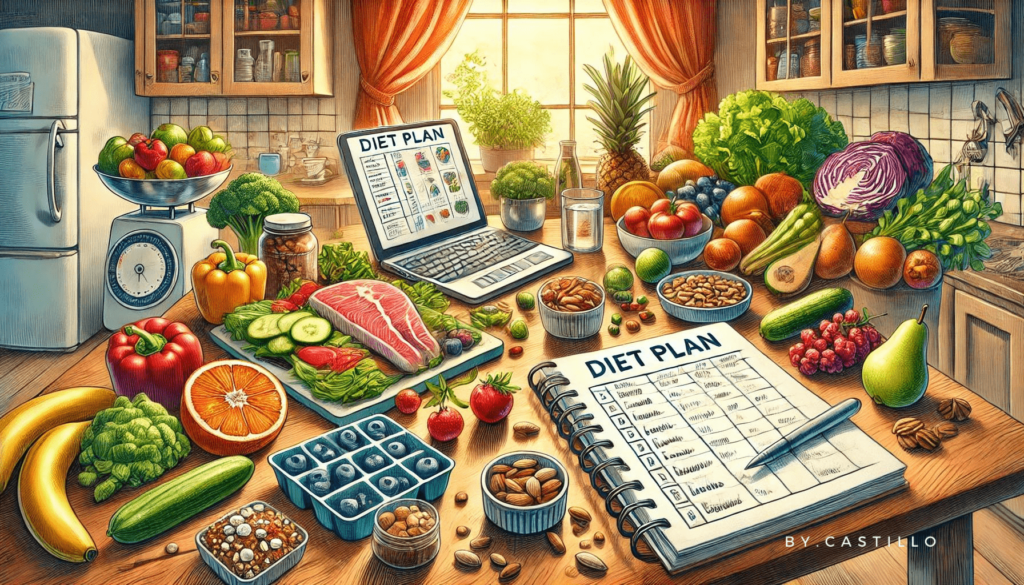
As we all know, a balanced and nutritious diet is the foundation of healthy weight loss. Focusing on whole, minimally processed food that provides a variety of essential nutrients is the key to reaching your weight loss goals. But before we get into crafting a diet, let’s look into macronutrients to understand the role they play and how they aid in weight loss.
Understanding Macronutrients
Macronutrients are the nutrients your body needs in large amounts to function properly. There are three main types: carbohydrates, proteins, and fats. Each plays a crucial role in your overall health and can significantly impact weight loss. Here’s a breakdown:
1. Carbohydrates
Role: Carbohydrates are your body’s primary energy source. They are broken down into glucose, which fuels your brain, muscles, and other vital organs.
In Weight Loss: While carbs are essential, not all carbs are created equal. Simple carbs (like sugar and white bread) can spike your blood sugar, leading to energy crashes and cravings. Complex carbs (like whole grains, fruits, and veggies) provide sustained energy and help you feel full longer, which can help with weight loss.
2. Proteins
Role: Proteins are the building blocks of your muscles, skin, enzymes, and hormones. They help repair and build tissues and are crucial for overall growth and maintenance.
In Weight Loss: Protein is key for weight loss because it increases satiety (feeling full) and boosts metabolism. Eating enough protein can help preserve muscle mass while losing fat, making it easier to achieve a toned appearance.
3. fats
Role: Fats are essential for absorbing fat-soluble vitamins (A, D, E, and K), protecting your organs, and providing long-lasting energy. They are also crucial for hormone production and brain health.
In Weight Loss: Healthy fats (like those from avocados, nuts, and olive oil) can help you feel satisfied and reduce overall calorie intake. However, it’s important to watch portion sizes because fats are calorie-dense.
Balancing Macronutrients for Weight Loss
Finding the right balance of macronutrients is key to effective weight loss. While each person’s needs may vary based on body composition, a common approach is to prioritize lean proteins, incorporate healthy fats, and choose complex carbohydrates. This balance can help manage hunger, boost metabolism, and support long-term weight loss goals.
Crafting Your Own Balanced and Nutritious Diet Plan

Remember to focus on minimally processed foods to achieve the best results. This means incorporating a variety of fruits, vegetables, lean proteins, and healthy fats to ensure you’re getting essential nutrients while keeping calories in check.
The first step is to understand your body composition. Once you have that it’s time to create your diet plan. Here are the steps:
1. Determine Your Calorie Needs
- Calculate Basal Metabolic Rate (BMR): This is the number of calories your body needs at rest. You can use online calculators that consider your age, gender, weight, and height.
- Account for Activity Level: Multiply your BMR by an activity factor (e.g., sedentary, moderately active, very active) to estimate your Total Daily Energy Expenditure (TDEE).
- Set a Caloric Deficit: To lose weight, aim for a calorie deficit of 500–750 calories per day, which should lead to a healthy weight loss of about 1–2 pounds per week.
2. Balance Your Macronutrients
- Protein: Aim for about 25-30% of your total daily calories from protein. Protein is essential for muscle preservation and helps keep you full.
- Carbohydrates: Allocate 45-50% of your daily calories to carbs, focusing on whole grains, fruits, and vegetables for sustained energy and fiber.
- Fats: Fat should make up about 20-30% of your daily calories. Opt for healthy fats like avocados, nuts, seeds, and olive oil.
3. Prioritize Nutrient-Dense Food
- Vegetables and Fruits: These should be the cornerstone of your diet. They’re low in calories but high in vitamins, minerals, and fiber.
- Lean Proteins: Include sources like chicken, turkey, fish, tofu, and legumes.
- Whole Grains: Choose options like brown rice, quinoa, oats, and whole wheat products.
- Healthy Fats: Incorporate fats like olive oil, nuts, seeds, and fatty fish like salmon.
4. Plan Your Meals and Snacks
- Breakfast: Start with a balanced meal that includes protein (e.g., eggs or Greek yogurt), a complex carb (e.g., whole grain toast or oatmeal), and healthy fat (e.g., avocado or nuts).
- Lunch and Dinner: Both meals should include a lean protein, a serving of vegetables, and a healthy carbohydrate. Add a small portion of healthy fat.
- Snacks: Opt for nutrient-dense options like a handful of nuts, a piece of fruit, or some cut-up veggies with hummus.
5. Monitor Your Portion Size
- Use smaller plates and bowls to control portion sizes.
- Be mindful of serving sizes, especially with calorie-dense foods like nuts, seeds, and oils.
6. Stay Hydrated
- Drink plenty of water throughout the day, aiming for at least 8 cups (64 ounces).
- Limit or avoid sugary drinks and alcohol, which can add unnecessary calories.
7. Plan for Flexibility
- Allow yourself some flexibility for occasional treats. This can prevent feelings of deprivation and help you stick to your plan long-term.
- Practice mindful eating, enjoying your meals without distractions, and paying attention to hunger and fullness cues.
8. Track Your Progress
- Keep a food diary or use an app to track your daily intake. This can help you stay accountable and make adjustments as needed.
- Regularly monitor your weight and body measurements to see how you’re progressing.
9. Adjust as Needed
- If you hit a plateau, reassess your caloric needs and adjust your intake or activity level.
- Make sure you’re getting enough sleep and managing stress, as both can impact weight loss.
10. Seek Support If Needed
- Consider consulting with a registered dietitian or nutritionist for personalized advice.
- Join a support group or find a workout buddy to help keep you motivated.
Tackle a few of these steps at a time. Trying them all at once could lead to stress and cause you to quit your weight loss plan. Remember, the key is consistency and making sustainable changes along the way that you can maintain over time.
Follow A Popular Weight Loss Diet

Crafting your diet plan is challenging if you have a hard time coming up with nutritious recipes. You can always start by following other popular diet plans for weight loss. This will give you a strong start and keep you from constantly thinking about what to cook.
Here is a list of popular weight loss diets that are proven to work:
1. Mediterranean Diet:
This diet emphasizes whole grains, fruits, vegetables, legumes, nuts, and healthy fats like olive oil. It includes moderate amounts of fish, poultry, and dairy, with limited red meat.
Why it works:
- High in fiber, which promotes fullness and aids digestion
- Rich in healthy fats that support satiety
- Focuses on whole, unprocessed foods that are generally lower in calories
- Encourages mindful eating and portion control
2. DASH (Dietary Approaches to Stop Hypertension):
Similar to the Mediterranean diet, DASH emphasizes fruits, vegetables, whole grains, lean proteins, and low-fat dairy. It limits sodium, added sugars, and saturated fats.
Why it works:
- Promotes nutrient-dense, low-calorie foods
- Reduces processed and high-calorie foods
- Balanced approach supports sustainable eating habits
3. Ketogenic Diet (e.g., Atkins, Low-Carb Diet):
These diets restrict carbohydrate intake while increasing protein and fat consumption.
Why they work:
- Reduce insulin levels, promoting fat-burning
- Higher protein intake increases satiety and preserves muscle mass
- Often leads to reduced overall calorie intake due to limited food choices
- Initial rapid water weight loss can be motivating
4. Intermittent Fasting:
This approach involves cycling between periods of eating and fasting, with various methods like 16/8 (16 hours fasting, 8 hours eating) or 5:2 (5 days of normal eating, 2 days of very low-calorie intake).
Why it works:
- Can lead to reduced overall calorie intake
- May improve insulin sensitivity and metabolic health
- Often easier to adhere to than daily calorie restriction for some people
5. Plant-Based Diets (e.g., Vegan, Vegetarian):
These diets focus on plant foods and either reduce or eliminate animal products.
Why they work:
- Often lower in calories and higher in fiber
- Tend to be nutrient-dense and filling
- May lead to reduced consumption of high-calorie processed foods
6. Portion Control Diets (e.g., Weight Watchers):
These diets focus on controlling portion sizes and tracking food intake, often using a points system or similar methods.
Why they work:
- Promotes awareness of calorie intake
- Teaches sustainable eating habits and balanced nutrition
- Allows flexibility in food choices while maintaining a calorie deficit
It’s important to note that while these diets have been shown to be effective for many people, individual results can vary. The most effective diet is one that creates a sustainable calorie deficit while providing adequate nutrition and being feasible for the individual to maintain long-term. Factors like personal preferences, lifestyle, and health conditions should be considered when choosing a diet plan.
Sign Up For a Meal Delivery Service

Signing up for a meal delivery service comes with a cost but so do groceries. If you have a tight schedule and can’t find the time to cook, your best option is to look into a meal delivery service that will help you reach your weight loss goals. There are a ton of services out there to pick from but each of them has its pros and cons.
Here are a few things to consider when shopping for a meal delivery service:
- Menu variety and customization options
- Dietary accommodations (e.g. Keto, Vegetarian, Gluten-Free, Vegan)
- Nutritional value and portion sizes
- Ingredient quality and sourcing
- Pricing and subscription models
- Delivery frequency and flexibility
- Packaging and environmental impact
- Customer reviews and ratings
- Delivery area coverage
- Refund and cancellation policies
- Allergies and cross-contamination prevention
- Freshness and shelf life of delivered meals
- Customer service quality
Find a meal delivery service that aligns with your goals, diet preferences, and budget.
Understanding Calorie Intake

Understanding calorie intake and how it affects weight loss is crucial for a successful weight loss plan. To lose weight you must consume fewer calories than you burn each day.
For example, if a person burns 2,500 calories a day and their goal is to lose weight, they will need to consume 2,000 calories a day to stay at a 500-calorie deficit. Staying within a calorie deficit will ensure weight loss over time.
What you must avoid while on a weight loss plan is a calorie surplus. This is when you consume more calories in a day than you need. For example, if a person burns 2,500 calories in a day but consumes 3,000 calories they are in a 500 calorie surplus. This will lead to weight gain! The longer you stay in a calorie surplus the more weight you will gain.
Ensuring you are in a caloric deficit by tracking your calories will help you stay on track to hit your weight loss goals.
How To Track Your Calories
- Use a food diary log or a calorie-tracking app like MyfitnessPal to keep track of your calorie intake.
- Use food scales and measuring cups to measure portion sizes accurately.
- Read nutrition labels carefully to understand serving sizes and calorie content.
- Be mindful of high-calorie beverages like sugary drinks and alcohol.
- Adjust your calorie intake based on your daily activity level, progress, and goals.
Incorporating Physical Activity for Maximum Results

It’s no secret that combining physical activities with a weight loss plan will greatly benefit your overall health and start seeing results faster.
A good start is to combine activities you enjoy into your weekly schedule. This approach will help you stay consistent and have fun at the same time.
Let’s take a look at some fun activities you can take into consideration:
- Walking
- Dancing/Dancing classes
- Sports: basketball, pickle-ball, softball, boxing, cycling, tennis
- Jogging
- Swimming
- Strength training
- Hiking
- Yoga
Keep in mind that if you combine cardiovascular exercises like cycling or jogging, with strength training using weight or resistance bands burns more calories, builds lean muscles, and boosts metabolism.
If you are not an active individual, start slow with an hour walk each day and slowly progress from there as you continue to lose weight and increase the intensity of your activity. This approach will help you avoid plateaus while further aiding in weight loss.
Fitting Exercises and Physical Activities Into Your Schedule
We all have busy schedules, but there should be no excuses for getting some kind of physical activity in each day. You don’t need to spend hours in the gym or kill yourself in each workout session. Let’s go over a few ways you can incorporate activity into your schedule.
Start Small, Think big
Tip: Start with quick manageable workouts or exercises. 30, 15, or even 10 minutes of exercise will do wonders! It doesn’t matter if it’s a quick jog, a set of squats, or a dance party in your living room, small efforts add up over time.
Why It Works: Starting with a light exercise or workout reduces the intimidation factor. Plus, once you get moving you’ll feel motivated to keep going!
Sneak In Movements Throughout The Day
Tip: Here are a few ideas to incorporate extra movement throughout the day without carving out extra time. Park farther away from entrances, take the stairs instead of the elevator, take a walk during breaks at work, or do a few stretches during TV breaks.
Why It Works: These small extra movements increase your overall daily calorie burn and keep your metabolism in gear.
Make Exercise a Non-Negotiable Appointment
Tips: Schedule your workouts like you would a meeting or a doctor’s appointment. Make them non-negotiable with yourself! Pick a time and stick to it!
Why It Works: Approaching a workout schedule as a priority will help you make it part of your routine rather than something you do “if you have time”. This will also lead to building active healthy habits.
Combine Workouts With Other Activities
Tips: Multitask by combining exercises with other activities you enjoy or need to do. For example, watch a show while on the treadmill, listen to a podcast while walking, or catch up with a friend during a hike.
Why It Works: Combining activities you enjoy while exercising makes it feel less like a chore and more like a fun part of your day you can look forward to.
Choose Activities You Enjoy
Tips: Pick activities or exercises you enjoy doing. Whether it’s walking, yoga, swimming, boxing, or cycling. Make it fun!
Why It Works: You’re more likely to stay consistent if it’s something you look forward to rather than dreading.
Stay Flexible (Not Just Literally)
Tips: Life is full of surprises so be adaptive. When your workout plans get derailed, don’t stress, do what you can, when you can. A short workout is better than nothing!
Why It Works: Being flexible with your workout routine will help you stay consistent which is important for building healthy habits and key for weight loss and overall health.
Use Technology To Your Advantage
Tips: There are tons of fitness apps you can use to help you with your weight loss goals. They can help you track your calories, have follow-along workout videos, and can help you set reminders to move throughout the day.
Why It Works: Fitness apps can provide motivation and convenience, making it easier to stay on track and monitor our progress.
Use Exercise As Me Time:
Tips: Think of your exercise time as a break from the stresses of the day. This is “me” time to clear your head, focus on yourself, and recharge for the day.
Why It Works: When you view exercise as a form of self-care, it becomes something you look forward to rather than another task on the to-do list.
Exercising doesn’t have to be a major disruption in your life. With a creative and flexible mindset, you can find ways to stay active, shed some extra pounds, and feel great. You won’t need a time machine to add extra hours in a day!
Developing a Healthy Mindset for Long-Term Success

Keeping a healthy mindset while executing your weight loss plan will set you up for long-term success. Remember, a weight loss journey is about building long-term healthy habits. It’s a lifestyle change you have to commit to.
Use self-awareness to analyze your thoughts and emotions. Becoming self-aware of overcoming emotional eating triggers can help you stay on track and help you avoid sit-backs. Practice mindfulness and self-compassion throughout your journey.
Don’t forget to celebrate off-scale victories and progress to maintain motivation. This one is big and should not be overlooked. Notice yourself walking faster? Maybe you don’t get out of breath as easily as you used to…or maybe your clothes fit better. These small victories will keep you motivated and wanting more results. It’s what will keep fueling your drive to lose weight as you continue to progress.
Last but not least, surrounding yourself with a supportive network can significantly boost your chances of reaching your weight loss goals. Surrounding yourself with others who share the same goal can help boost your commitment and consistency. Having a friend join you on your weight loss journey can significantly boost your drive and hold each other accountable.
Here are other strategies to develop a healthy mindset:
- Keep a gratitude journal to focus on the positive aspects of your journey.
- Practice meditation or deep breathing exercises to manage stress.
- Visualize yourself achieving your goals regularly Join a support group or online community for encouragement.
- Seek professional help if you struggle with emotional eating or body image issues.
- Set non-weight related goals, like running a 5K or mastering a new healthy recipe.
- Use positive affirmations to reinforce your commitment to a healthier lifestyle.
Navigating Challenges and Setbacks

Plateaus are common and to be expected. While frustrating, plateaus are an indication that you need to push yourself a bit harder or adjust your weight loss plan.
Is that hour walk starting to feel like a breeze? Weightlifting getting easier?… These are indications that your body has gotten used to the intensity and it’s time to step it up once again.
Instead of walking, incorporate a few sprints during your walk to further increase your heart rate. Or, start jogging instead of walking. These small intensity increases will help you get over your plateau and support your drive to physically improve. But, physical plateaus are not the only challenges you will face.
Diet setbacks can happen as well and they should be expected. But, there are steps you can take to get over the “hump”.
You can reassess your calorie intake and make adjustments as needed. When dealing with cravings and temptations, have healthy snacks on hand and practice portion control.
During holidays, vacations, and social events:
- Offer to bring a healthy dish to share.
- Focus on enjoying the company, not just the food.
- Allow yourself small indulgences without guilt.
Here are a few tips to navigate weight loss challenges:
- Reassess your calorie intake and adjust if necessary
- Vary your workout routine to challenge your body in new ways
- Practice mindful eating to identify true hunger versus emotional cravings
- Plan ahead for social events by eating a healthy snack beforehand
- Allow yourself occasional treats in moderation to avoid feeling deprived
- Get back on track immediately after a setback rather than waiting to “start over”
- Use stress-management techniques like yoga or journaling to avoid emotional eating
Plateaus and setbacks will happen. You just have to be able to acknowledge them, adjust, and continue to make progress. Don’t see plateaus as “I’m stuck, I can’t progress”, see them as a signal to adjust your weight loss plan accordingly.
Maintaining Your Weight Loss for Life

Sustainable weight loss requires a lifelong commitment to healthy habits. As you start your weight loss journey you will naturally start incorporating new habits that will become second nature. This will only happen if you stay committed and trust the process.
You will get to a point where you can gradually transition into a maintenance phase by finding a balance between a nutritious diet and regular physical activity. By continuing to monitor your calorie intake and making small adjustments as needed you will find it easier to maintain your weight. Always reassess your goals and progress to stay motivated and on track with your new lifestyle.
Here are a few tips on how to maintain your weight loss:
- Continue monitoring your calorie intake, adjusting for maintenance.
- Stay consistent with your exercise routine, focusing on activities you enjoy.
- Weigh yourself regularly to catch any weight fluctuations early.
- Practice mindful eating to maintain a healthy relationship with food.
- Continue meal planning and prepping to avoid falling back into old habits.
- Stay connected with your support network for ongoing motivation.
- Set new health and fitness goals to keep challenging yourself.
Remember, it’s a lifestyle change and long-term commitment.
Wrapping Up
Successful, sustainable weight loss is achievable with the right strategies and mindset. By setting realistic goals, crafting a balanced diet, understanding calorie intake, incorporating exercise, developing a healthy mindset, navigating challenges, and maintaining your progress, you’re well-equipped to lose weight and keep it off. Remember, weight loss is a journey, not a destination, and setbacks are normal. Embrace the process, stay committed, and watch your efforts pay off. Implement these strategies and take control of your health today!

